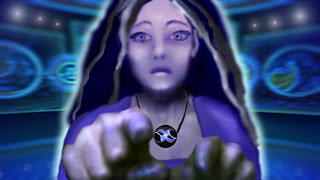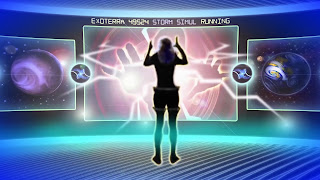I've been rotoscoping (drawing on top of frames) videos of my own face and body for the guide to create the two main figures' movement (and a little help from Muybridge action photos in one clip), with different features and body than my own ( The male in this actually resembles me much more than the female, whose face is very altered. )Some was less rotoscoping, and more just redrawing/altering the new figures to match the expression I made. It gets a little tedious, as a detailed face with limited movement can look vapid. I've also had to correct too much movement that can end up looking like a tic. Next time I take on the project, I'm going to simplify the facial features and make something more general. Not merely as a time saver, but to depict a more universal symbol of a type of figure that the reader would naturally perceive. Scott McCloud in Understanding Comics - The Invisible Art (a smart and trippy read for all visual artists, and those who appreciate them) touches on the range of specific likenesses to a universal generality. (A comprehensive review of the book can be found here: AnnaP's Blog )
some of Scott McCloud's examples:
For the final scene in the animation, I'm happy to say I don't have to rely on myself for the action and subsequent manipulation again. A friend agreed to digitally shoot himself and his girlfriend in an interactive scene, and with the help of a green screen too. I'll be using the silhouette of their forms, and creating an animated universe inside the figures. I won't have to manipulate the features or their shapes.
So here's some more stills:
I have a mini clip pinned to the top of my Twitter for the time being (as of 6/18/16) that I'll keep up for a few more weeks. I give more frequent updates on my work there, along with chiming in on general topics (current events, music, podcasts, comedy, etc).









No comments:
Post a Comment